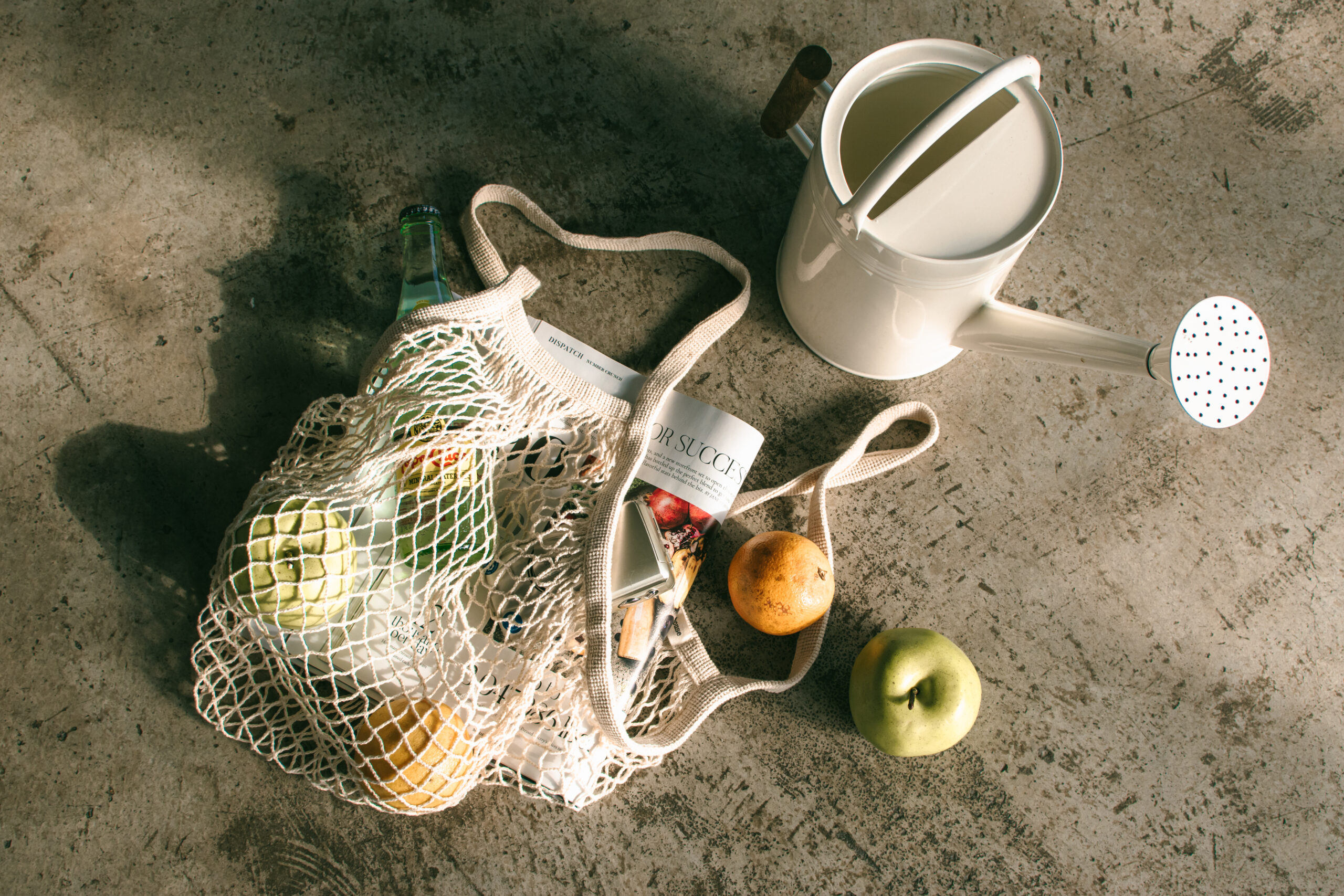See a USDA Organic Certified label on a package of strawberries or a jar of tomato sauce and you probably think to yourself ‘oh, this must be healthier for me’. As a health-conscious consumer you want to make sure you’re putting the absolute best foods into your body and knowing that something has the literal organic seal of approval gives you that peace of mind.
But what does “organic” mean, really?
And is it truly better for your health (and the environment)?
WHAT DOES USDA ORGANIC CERTIFIED MEAN?
The “organic” designation means simply that pesticides must originally come from a natural source and that is does not contain GMOs (a topic for another time).
Sounds great! But when you dig deeper into the science and the regulations we see that the organic designation does allow for synthetic pesticides. In fact, more than two dozen synthetic chemical pesticides are permitted in organic agriculture (see the full list of synthetic + natural allowed substances in organic farming HERE). And that number is growing largely due to organic farmers lobbying for allowance of more pesticides for higher yield crops.
“The U.S. Department of Agriculture is proposing to change restrictions on 17 substances allowed in organic production or handling: micronutrients, chlorhexidine, parasiticides, fenbendazole, moxidectin, xylazine, lidocaine, procaine, methionine, excipients, alginic acid, flavors, carnauba wax, chlorine, cellulose, colors and glycerin.
The changes up for public comment also add 16 substances to the National List, meaning organic producers can use them in production and handling: hypochlorous acid, magnesium oxide, squid byproducts, activated charcoal, calcium borogluconate, calcium propionate, injectable vitamins, minerals, electrolytes, kaolin-pectin, mineral oil, propylene glycol, acidified sodium chlorite, zinc sulfate, potassium lactate and sodium lactate.” — Food Safety News
The condition for organic pesticides is that they must originally come from a natural source, but unfortunately, this doesn’t imply that natural chemicals are any less deadly or toxic (Ebola is natural) or that natural is somehow better than synthetic. In fact, the only real difference between organic pesticides and those used in conventional farming is that organic toxins are rarely tested for health and environmental safety and there is actually no testing for toxic residue levels on organic produce.
SO HOW DO WE MEASURE TOXICITY IN FOOD PRODUCTS?
The US EPA defines LD50 as a standard measurement of acute toxicity that is stated in milligrams (mg) of pesticide per kilogram (kg) of body weight. An LD50 represents the individual dose required to kill 50 percent of a population of test animals (e.g., rats, fish, mice, cockroaches). LD50 values are standard measurements so we can compare relative toxicities among pesticides. The lower the LD50 dose, the more toxic the pesticide, the higher the dose, the less toxic.
Let’s use one of my favorite examples: Glyphosate
The LD50 for glyphosate is 5600 mg/kg meaning it is slightly toxic. (for reference, the WHO considers any measurement over 2000mg/kg to be slightly toxic – its lowest level of measured toxicity)
By comparison, baking soda found in most cookies (LD50: 4220 mg/kg) and acetaminophen taken daily by many individuals (LD50: 1944 mg/kg) are more toxic than glyphosate. See a nice benchmark toxicity table.
All of the pesticides approved for use in organic farming in the list below have an LD50 toxicity measurement much lower than glyphosate (meaning they are more toxic).
1 – Boron (LD50: 560 mg/kg)
2 – Acetic Acid (LD50 3310 mg/kg)
3 – Copper sulphate (LD50: 300 mg/kg)
4 – Pyrethrin (LD50 ranges from 200 mg/kg to 2,600 mg/kg)
5 – Hydrogen peroxide (LD50 depends on concentration)
6 – Lime sulphur (LD50: 820 mg/kg)
7 – Rotenone (LD50: 132 mg/kg)
8 – Nicotine sulphate (LD50: 50-60 mg/kg)
9 – Azadirachtin (LD50: 3,540 mg/kg)
10 – Methyl bromide (LD50: 214 mg/kg)
Fun Fact: A year’s consumption of well-tested synthetic pesticide residues have been known to be far safer than drinking a single cup of coffee. In fact, in the time it takes you to read this article while drinking a cup of coffee, you’re consuming far more potential toxins than what you’ll find in conventional produce (and your coffee is still safe to drink!)
Okay so we’ve established there’s pesticide residue in your organic products, that those pesticides while “natural” can still be toxic depending on the dose, they’re all more toxic than glyphosate, and the certifying body for organic products doesn’t actually test for toxicity in those products.
So what’s safe to consume?? Should we just stop eating fruits and veggies altogether because they’re all going to contain some level of pesticide residue? (spoiler: absolutely not)
A USDA study of 571 fruit and vegetable samples bearing the organic seal found that 43 percent had detectable residues of prohibited pesticides.
In 2018, over 99 percent of the samples tested by the USDA (remember, the they can only tests conventional products) had residues well below the tolerances established by the Environmental Protection Agency (EPA) with 47.8 percent having no detectable pesticide residue at all.
The levels of pesticide residue that is detected in these tests is 100s of thousands of times below the tolerance level. So when we detect residue, it’s still 100s of thousands of times below the tolerance level. So, safe. Further, tolerance levels are set 100s of thousands of times below what would make you sick. You’d have to consume 453 strawberries in a single day in order for it to even reach the level the highest pesticide residue recorded for strawberries by USDA and you’d STILL BE SAFE (check out this cool calculator).
The USDA regularly tests for pesticide residues to ensure that they are within the EPA tolerance levels as a part of their Pesticide Data Program (PDP), which is available to the public to view. There is, however, one caveat to the PDP; even though “natural” pesticides go through the same EPA scrutiny as synthetic pesticides to ensure they can be used safely, the USDA PDP is not set up to be able to detect most of the organic-approved pesticides because it would require expensive and specific assays. Only the organic-approved fermentation product, Spinosad, is detected by the methods used.
Ph.D. Plant Pathologist Steven Savage analyzed the 2016 PDP data, which showed that 99.85 percent of the residues that were detected are below the already conservative EPA tolerances. What’s surprising is that residues from synthetic pesticides that aren’t allowed under organic regulations are regularly detected on samples that are being sold as organic. (there’s an allowance of 5% “unintentional” allowance for organic produce containing not-allowed synthetic pesticide residues)
Another fun fact: 99.99% (by weight) of the pesticides in the American diet are chemicals that plants produce to defend themselves.
OKAY BUT IS ORGANIC PRODUCE SAFER ANYWAY? OR HEALTHIER? SURELY THE NUTRIENT STATUS OF ORGANIC PRODUCE IS BETTER THAN CONVENTIONAL, RIGHT?
A landmark study published in 2012 in the Annals of Internal Medicine by researchers at Stanford University’s Center for Health Policy aggregated and analyzed data from 237 studies to determine whether organic foods are safer or healthier than non-organic foods. They concluded that fruits and vegetables that met the criteria for “organic” were on average no more nutritious than their far cheaper conventional counterparts, nor were those foods less likely to be contaminated by pathogenic bacteria.
There is not a significant difference in nutrient status in organic vs conventional products
A 2009 review by Dangour et. al. concluded: “On the basis of a systematic review of studies of satisfactory quality, there is no evidence of a difference in nutrient quality between organically and conventionally produced foodstuffs. The small differences in nutrient content detected are biologically plausible and mostly relate to differences in production methods.” .
A 2010 review also by Dangour found: “From a systematic review of the currently available published literature, evidence is lacking for nutrition-related health effects that result from the consumption of organically produced foodstuffs.” .
A 2012 review by Smith-Spangler et. al. found: “After analyzing the data, the researchers found little significant difference in health benefits between organic and conventional foods. No consistent differences were seen in the vitamin content of organic products, and only one nutrient — phosphorus — was significantly higher in organic versus conventionally grown produce (and the researchers note that because few people have phosphorous deficiency, this has little clinical significance).”
So in terms of toxicity, pesticide use, and nutrient status, the ‘organic is better’ argument doesn’t really hold up. But is it better for the environment? Happy plants, happy cows, happy organic farms?
Steven Savage analyzed the data from the USDA’s 2014 Organic Survey, which reported various measures of productivity from most of the certified organic farms in the nation, and compared them to those at conventional farms. His findings were extraordinary. In 59 of the 68 crops surveyed, there was a yield gap, which means that, controlling for other variables, organic farms were producing less than conventional farms. Many of those shortfalls were large: for strawberries, organic farms produced 61 percent less than conventional farms; tangerines, 58 percent less; cotton, 45 percent less; rice, 39 percent less; and on and on.
As Dr. Savage observed: “To have raised all U.S. crops as organic in 2014 would have required farming of 109 million more acres of land. That is an area equivalent to all the parkland and wildland areas in the lower 48 states, or 1.8 times as much as all the urban land in the nation.”
^^ read that again because that is STAGGERING. organic farming as it stands currently is not sustainable.
It’s not that we’re against organic, it’s that we don’t need to fear conventional produce. Nutritionally it isn’t better. It isn’t safer.
The biggest issue with the obsession with organic product is that most Americans don’t eat enough fruits and veggies as it is – organic is more expensive – this obsession with organic is harmful from a public health perspective. Health experts agree that one of the best things we can all do for our health is to confidently enjoy healthful foods. So the last thing we should do for our health is avoid conventional produce or the foods on the “Dirty Dozen List”.
Shockingly only one in 10 Americans eating enough fruits and vegetables each day, promoting organic is healthier or better for you is just plain misinformation and at this rate, a public health crisis.
One peer reviewed study found that messaging which inaccurately describes certain fruits and vegetables as having “higher” pesticide residues results in low income shoppers reporting that they would be unlikely to purchase any fruits and vegetables – organically or non-organically grown.
At the end of the day, there are incredibly tiny amounts of pesticide residues that can be detected in both conventional and organic foods, but they are mostly hundreds to thousands to tens of thousands of times lower than the EPA’s extremely conservative “tolerance” levels.
YOUR FOOD SUPPLY IS INCREDIBLY SAFE.
If you want to purchase organic produce and products, go for it! In my experience, often times the organic produce looks better or fresher than the conventional on the shelves (likely due to the proximity of the farms from which they came – less travel). But in nearly every instance, the only measurably significant difference between conventional and organic products is price.
A handful of studies have been hyperlinked in this article. More are listed below.
https://academic.oup.com/ajcn/article/90/3/680/4597089
https://www.ncbi.nlm.nih.gov/pubmed/20463045/
https://www.ncbi.nlm.nih.gov/pubmed/22944875/
https://www.safefruitsandveggies.com/studies/nutrition-today-low-income-shoppers-and-fruits-and-vegetables-what-do-they-think/





Read the Comments +